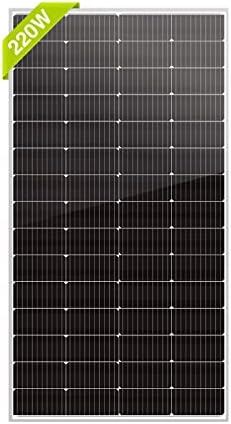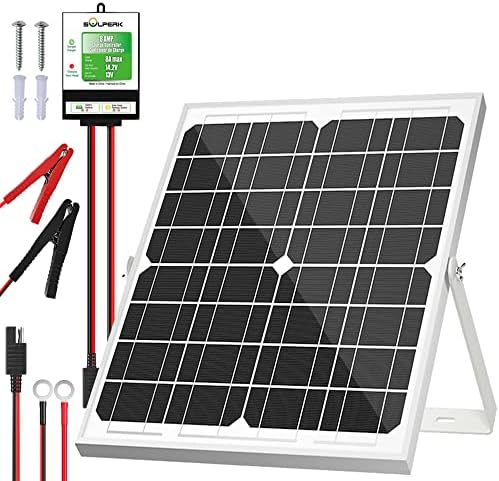# Innovations in Solar Panels: Which Type Should You Invest In?
Living in a self-sustaining home amid nature’s beauty is an experience like no other. I remember the first time I installed solar panels on my little cabin in the woods—my excitement was through the roof! The idea of harnessing the sun’s energy to power my day-to-day activities felt empowering and liberating. Fast forward several years, and the world of solar technology has blossomed with innovations that make solar energy more accessible, efficient, and versatile than ever. If you’re considering venturing into solar power, you’re not alone! Let’s dive into the exciting innovations in solar panels and help you pinpoint the type that best suits your needs.
## The Evolution of Solar Panels
Solar panels have come a long way since the introduction of silicon-based cells in the late 20th century. Initially viewed as a luxury for the eco-conscious, advances in technology have transformed them into a practical, cost-effective solution for many households. Here’s a snapshot of how solar technology has evolved:
1. **Monocrystalline Panels**: These panels are made from a single crystal structure, resulting in high efficiency and a sleek appearance. While they tend to be pricier, they often offer the highest energy output per square foot.
2. **Polycrystalline Panels**: Made from multiple crystal structures, these panels are somewhat less efficient but usually more affordable. They are a popular choice among budget-conscious consumers and those with ample roof space.
3. **Thin-Film Solar Panels**: This type of solar technology involves layering thin layers of photovoltaic materials onto a substrate. Although they excel in flexibility and versatility, they typically have lower efficiency rates compared to their crystalline counterparts.
4. **Bifacial Solar Panels**: These innovative panels can generate energy from both sides, capturing sunlight that reflects off surfaces beneath them. They are gaining traction in commercial applications and could soon be a game changer for residential use.
5. **Building-Integrated Photovoltaics (BIPV)**: With this innovation, solar cells are integrated into building materials (like windows and roofs), allowing for a seamless aesthetic while generating power. It’s an exciting phase for architects looking to design sustainable buildings without compromising aesthetics.
## Why Invest in Solar Technology?
Before diving into the specifics of which solar panels to choose, let’s take a moment to discuss why investing in solar technology is a wise decision:
– **Cost Savings**: While the initial investment might seem substantial, solar panels can lead to significant savings on your electricity bill over time. Many states also offer incentives and rebates, making the financial leap less daunting.
– **Environmental Impact**: Solar energy is one of the cleanest forms of energy available. By choosing solar, you’re contributing to a reduction in greenhouse gases and helping combat climate change.
– **Energy Independence**: Relying on solar power offers a sense of empowerment, liberating you from fluctuating energy prices and potential blackouts. Especially for those living off-grid, solar energy can be a lifeline.
– **Home Value Increase**: Solar panels can add to the market value of your property, appealing to environmentally-conscious buyers. Many potential homeowners today actively seek homes equipped with solar technology.
## Choosing the Right Type of Solar Panel
With various solar panel types on the market, how do you decide which one aligns best with your unique needs? Let’s break down some key considerations:
### 1. **Efficiency Needs**
– If you live in an area with limited roof space, **monocrystalline panels** could be the optimal choice due to their high efficiency rate. They provide the most energy output per square foot.
– For larger spaces, **polycrystalline panels** or **thin-film technology** might be more appropriate, as they can offer versatility and lower costs.
### 2. **Budget Constraints**
– **Polycrystalline panels** generally offer a good balance between cost and efficiency. They can be an excellent choice if you’re looking to invest less upfront while still making a significant energy impact.
– Always watch for **incentives or rebates** that might apply to your location, as they can significantly offset costs.
### 3. **Aesthetic Considerations**
– If you’re concerned about aesthetics, **BIPV** technology integrates solar panels directly into building materials. This option may come at a higher cost but can deliver an unmatched visual appeal.
### 4. **Installation and Maintenance**
– Ease of installation should not be overlooked. While all types of panels require monitoring and occasional maintenance, BIPV panels can be more complicated to install due to their integration with building structures.
### 5. **Durability and Lifespan**
– Look for panels rated for longevity. Most manufacturers offer warranties spanning 25 years or more, but some technologies (like monocrystalline) may outlast others under harsh weather conditions.
### 6. **Local Climate and Environment**
– In areas with high temperatures or heavy snowfall, consider how different panels perform under extreme conditions. Some panels are designed to handle specific climates better than others, affecting both efficiency and lifespan.
## Upcoming Innovations to Watch
The solar industry is constantly evolving, introducing innovations that can change the existing landscape. Here are some trends worth keeping an eye on:
– **Transparent Solar Panels**: Companies are experimenting with transparent solar cells that can be used on windows and materials without obstructing light. Imagine your building facades or windows generating energy without sacrificing aesthetics!
– **Solar Skins and Custom Designs**: These allow homeowners to customize the design of their solar roofs while maintaining efficiency. This innovation adds a personal touch while reducing the visibility of traditional solar panels.
– **Energy Storage Solutions**: Integration with advanced battery technology allows homeowners to store excess energy generated during sunny days for use during nights or rainy days, maximizing energy independence.
### Pro Tips for Solar Panel Investment
1. **Do Your Research**: Research and compare different brands, models, and technologies. While word-of-mouth and online reviews can help, make informed decisions based on your unique needs.
2. **Consult a Professional**: Bringing in a solar energy consultant can save time and help clarify what options suit your lifestyle and budget. They’ll provide insights that align with local regulations and incentives.
3. **Think Long-Term**: While initial costs might be high, consider the long-term energy savings and rebates that offset those expenses. Sustainability isn’t just about today—think five, ten, and fifteen years down the line.
4. **Go Local**: Local installers often understand regional regulations and climate conditions better. They can offer tailored solutions that big corporations may overlook.
5. **Always Check Warranties**: Look for warranties that cover both product and performance. Guarantees signal the company’s confidence in their technology, which can result in peace of mind down the road.
## Conclusion
The innovations in solar energy technology present a remarkable opportunity for anyone seeking sustainable living solutions. The variety of solar panels available allows for plenty of options that cater to your specific needs, budget, and aesthetic preferences. As the world shifts increasingly toward renewable energy sources, investing in solar panels is not merely a choice for today but a commitment to a more sustainable future.
Whether you opt for monocrystalline, polycrystalline, or explore exciting innovations like BIPV and bifacial solar panels, you’ll be contributing to a greener planet. Take the leap into solar energy; your future self will thank you!



